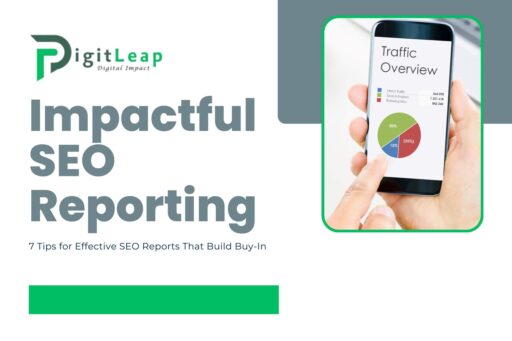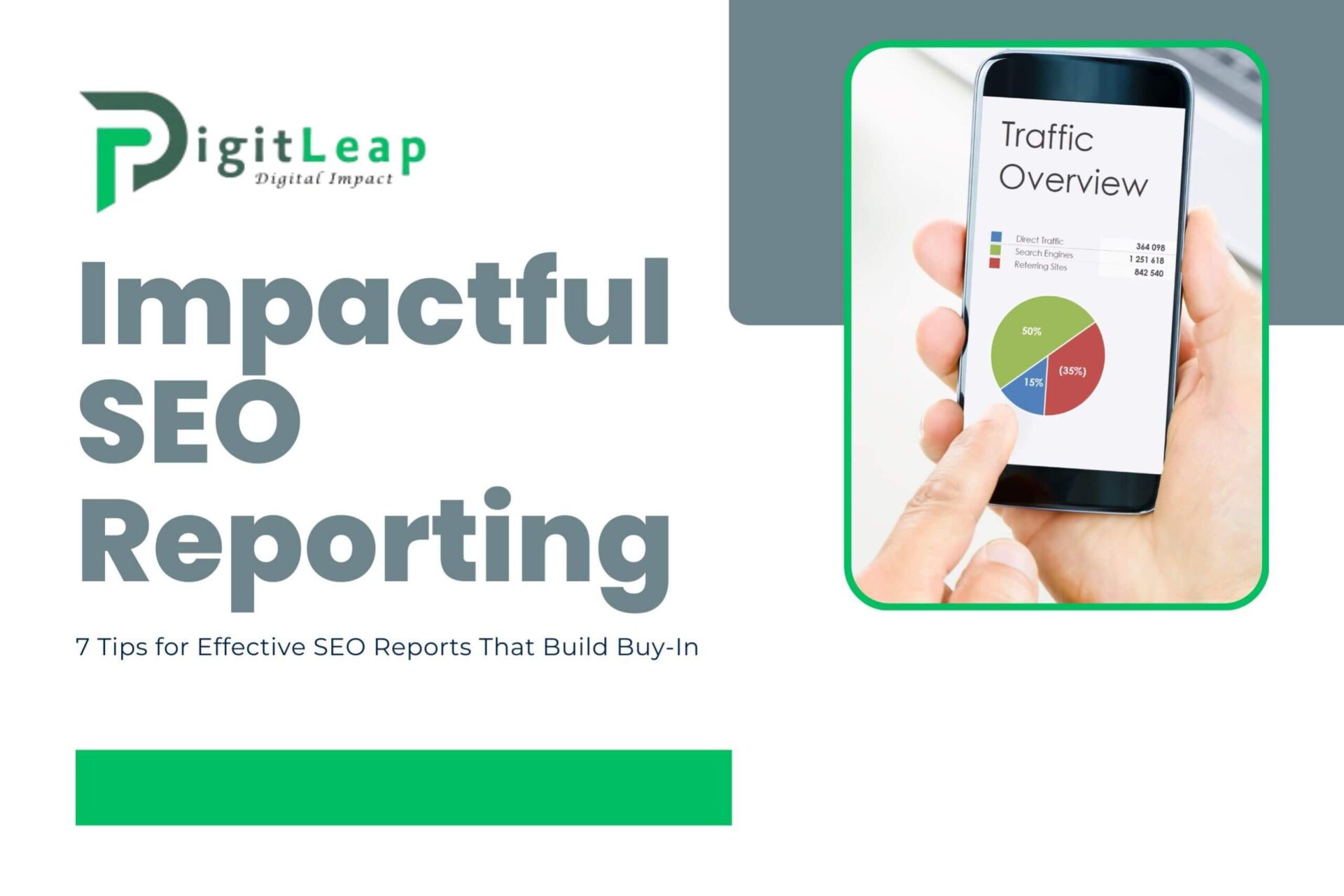Impactful SEO Reporting: 7 Tips for Effective SEO Reports That Build Buy-In
SEO reporting is a powerful tool for showing stakeholders the value of your SEO efforts. But creating reports that genuinely resonate, build trust, and get buy-in can be challenging. Stakeholders need to see how SEO impacts their business objectives, not just a list of metrics. Effective SEO reports tell a story, make results clear, and keep the audience engaged. Here are seven essential tips for creating impactful SEO reports that build buy-in and demonstrate your SEO strategy’s effectiveness.
1. Define Clear Goals and KPIs Upfront
Before diving into the data, establish clear SEO goals and key performance indicators (KPIs) that align with your business objectives. A good SEO report connects directly to what the organization wants to achieve, whether it’s increasing brand visibility, generating leads, or boosting sales.
- Set Relevant KPIs: Choose KPIs that matter most to stakeholders. Common KPIs include organic traffic, conversion rates, click-through rates (CTR), and keyword rankings. By focusing on metrics that impact business goals, you make the report more relevant and meaningful.
- Establish Benchmarks: Set benchmarks so that progress is measurable over time. Use historical data or industry averages to show how current performance compares to past results.
Clear goals and KPIs help frame your SEO efforts in terms of measurable progress, making it easier for stakeholders to understand the value SEO brings.
2. Focus on Metrics That Matter
One common mistake in SEO reporting is overwhelming the audience with too much data. Effective reports focus on the metrics that provide real insight into SEO performance and align with the company’s priorities. Instead of including every possible metric, highlight the ones that show SEO’s contribution to business growth.
- Prioritize Actionable Metrics: Focus on metrics that demonstrate SEO’s impact on business outcomes. For example, instead of just reporting on impressions or clicks, show how these actions led to conversions or engagement.
- Use Visual Aids for Key Metrics: Present important metrics in charts, graphs, or tables to make them easy to digest. Visuals help translate numbers into insights, making it easier for stakeholders to see trends and draw conclusions.
By focusing on impactful metrics, your report stays streamlined and relevant, making it easier for stakeholders to see the progress and impact of your SEO strategy.
3. Tell a Story with the Data
A successful SEO report goes beyond numbers; it tells a story that highlights achievements, challenges, and opportunities. Storytelling helps make the data more relatable, keeping stakeholders engaged and making it easier for them to understand complex metrics.
- Structure Your Report Logically: Start with the big picture, showing overall performance, and then drill down into specific areas like organic traffic, keyword rankings, and conversions. A logical structure allows stakeholders to follow the narrative easily.
- Include Insights and Context: Explain what the data means, why changes happened, and how they relate to your SEO strategy. For example, if organic traffic rose by 20%, mention any new content or technical improvements that may have contributed to the increase.
- Highlight Wins and Learnings: Emphasize achievements but also acknowledge areas that need improvement. Showing both successes and learning opportunities builds trust and demonstrates a commitment to continuous growth.
A story-driven approach transforms raw data into a compelling narrative, helping stakeholders connect the dots and understand the strategic decisions behind SEO efforts.
4. Keep the Report Simple and Focused
Stakeholders often have limited time, so a clear, concise report is more effective than a lengthy document. Keep the report simple, and focus on the information that matters most to decision-makers.
- Avoid Jargon: Use plain language to explain SEO metrics, avoiding technical jargon that may confuse the audience. Terms like “click-through rate” or “bounce rate” should be explained briefly if the audience isn’t familiar with them.
- Use Bullets and Summaries: Present key points in bullet form or short summaries. These make the report more readable, allowing stakeholders to quickly grasp the most critical insights.
- Focus on Key Takeaways: At the beginning or end of the report, provide a summary of key takeaways. Highlight the most important results and what they mean for the business.
A well-organized, straightforward report is easy to follow, making it more likely that stakeholders will engage with the information and appreciate the results of your SEO efforts.
5. Show ROI and Tangible Business Impact
To build buy-in, your SEO report should connect SEO metrics with the company’s bottom line. Stakeholders want to know how SEO contributes to revenue, customer acquisition, or cost savings. Showing the financial or strategic impact of SEO can be a powerful motivator.
- Calculate ROI: If possible, quantify SEO’s return on investment by comparing the costs of SEO initiatives to the revenue they generate. This can help demonstrate the value of SEO in terms of financial outcomes.
- Link to Business Goals: If your goal is to increase lead generation, show how SEO led to more qualified leads. If the focus is brand awareness, demonstrate how SEO improved brand visibility or site engagement.
- Showcase Conversions and Sales: Include metrics that show how SEO is driving conversions, whether that’s e-commerce sales, form fills, or other goal completions. This link to real business outcomes makes the impact of SEO tangible.
By showing the direct impact of SEO on the company’s goals, you make it easier for stakeholders to see the value and support ongoing SEO initiatives.
6. Be Transparent About Challenges and Next Steps
An honest and transparent SEO report builds trust by showing that you’re not just reporting good news, but also addressing areas that need improvement. Being open about challenges also demonstrates that you’re proactive and solution-oriented.
- Acknowledge Obstacles: Whether it’s a drop in rankings, a technical issue, or a competitive challenge, be upfront about difficulties encountered. Explain any steps taken to address these challenges or plans for future improvements.
- Share Lessons Learned: If an SEO tactic didn’t work as expected, share what you learned and how it will influence future strategies. This approach shows a commitment to learning and adaptation.
- Outline Next Steps: End the report with a clear plan for the coming period. Include specific actions, such as improving on-page SEO, building more quality backlinks, or enhancing content. This proactive plan reinforces that you’re continuously working to optimize performance.
Transparency builds credibility, showing stakeholders that SEO is an ongoing process of learning, adapting, and improving.
7. Use Interactive Dashboards for Real-Time Tracking
An interactive dashboard is a valuable addition to your SEO reporting toolkit. Dashboards give stakeholders a real-time view of SEO performance, allowing them to track progress without waiting for monthly reports. With dashboards, you can present up-to-date data that adapts to the needs of different departments.
- Personalize the Dashboard for Stakeholders: Customize the dashboard to show KPIs that are relevant to each stakeholder. For example, executives might want high-level traffic and conversion metrics, while the content team might prefer metrics related to engagement and audience behavior.
- Automate Data Updates: Automating data updates saves time and ensures that stakeholders always see the latest metrics. Use tools like Google Data Studio or Tableau to create live dashboards that pull data from Google Analytics, Google Search Console, and other SEO platforms.
- Encourage Self-Service Access: Providing stakeholders with dashboard access allows them to monitor performance independently, making SEO reporting a more collaborative and transparent process.
Interactive dashboards improve accessibility and help stakeholders stay connected to SEO performance, fostering a greater sense of involvement and buy-in.
Conclusion
Creating effective SEO reports is about more than just presenting numbers—it’s about building trust, demonstrating value, and securing ongoing support for your SEO strategy. By focusing on clear goals, relevant metrics, and transparency, you can create reports that engage stakeholders and make a compelling case for continued investment in SEO.
At Digit Leap, we specialize in delivering insightful, goal-driven SEO reports that speak to what matters most to your business. Our approach emphasizes clarity, business impact, and ongoing improvement, helping you secure buy-in and achieve long-term success in your SEO efforts.






